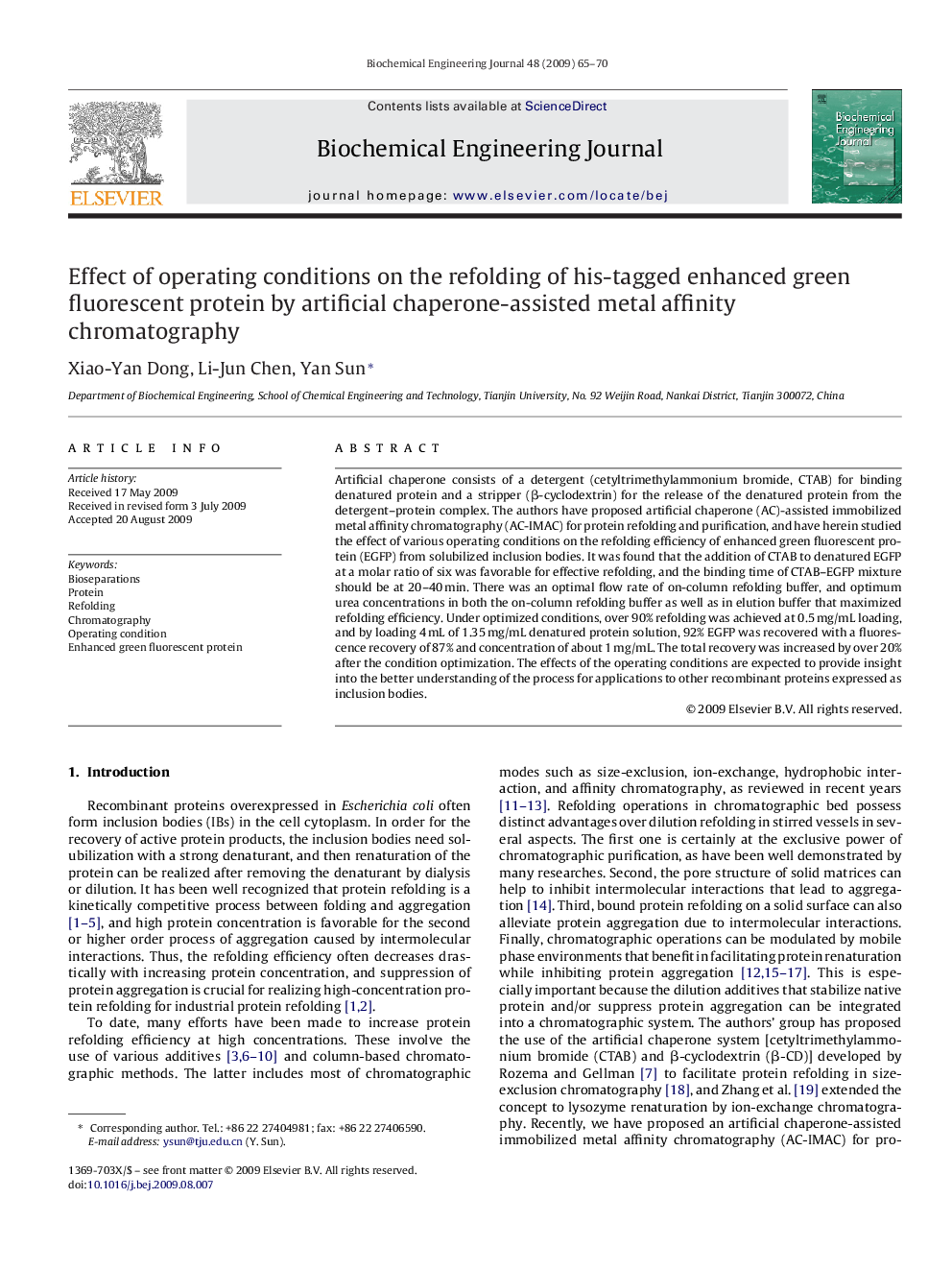| Article ID | Journal | Published Year | Pages | File Type |
|---|---|---|---|---|
| 4055 | Biochemical Engineering Journal | 2009 | 6 Pages |
Artificial chaperone consists of a detergent (cetyltrimethylammonium bromide, CTAB) for binding denatured protein and a stripper (β-cyclodextrin) for the release of the denatured protein from the detergent–protein complex. The authors have proposed artificial chaperone (AC)-assisted immobilized metal affinity chromatography (AC-IMAC) for protein refolding and purification, and have herein studied the effect of various operating conditions on the refolding efficiency of enhanced green fluorescent protein (EGFP) from solubilized inclusion bodies. It was found that the addition of CTAB to denatured EGFP at a molar ratio of six was favorable for effective refolding, and the binding time of CTAB–EGFP mixture should be at 20–40 min. There was an optimal flow rate of on-column refolding buffer, and optimum urea concentrations in both the on-column refolding buffer as well as in elution buffer that maximized refolding efficiency. Under optimized conditions, over 90% refolding was achieved at 0.5 mg/mL loading, and by loading 4 mL of 1.35 mg/mL denatured protein solution, 92% EGFP was recovered with a fluorescence recovery of 87% and concentration of about 1 mg/mL. The total recovery was increased by over 20% after the condition optimization. The effects of the operating conditions are expected to provide insight into the better understanding of the process for applications to other recombinant proteins expressed as inclusion bodies.
